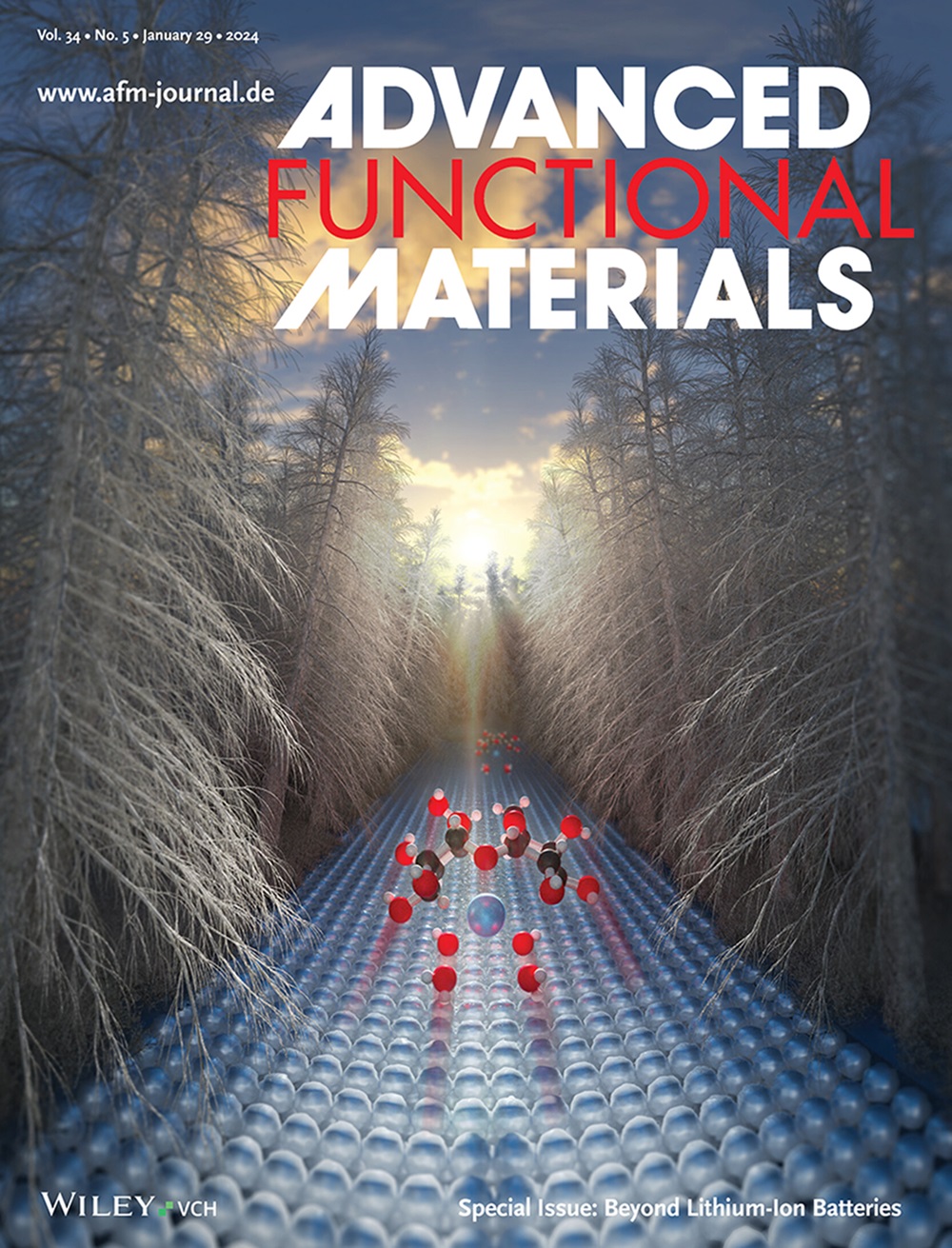Unlock the Walnut: How a Pectin‐Rich Suture Tissue and Moisture‐Driven Crack Formation Induce Shell Splitting and Facilitate Seed Germination
IF 19
1区 材料科学
Q1 CHEMISTRY, MULTIDISCIPLINARY
引用次数: 0
Abstract
Hard shells and seed coats have evolved to protect seeds but often hinder germination. This study delves into strategies of walnuts to overcome these protective barriers and enable seed germination. Using chemical imaging, microscopic analysis, and 3D reconstructions, the structure and composition of the walnut suture and its difference from the shell tissue are explored. Depending on its location on the shell, the suture tissue gradually changes from small, thin‐walled, and pectin‐rich cells to larger, thick‐walled, and lignified cells. To understand the influence of these different tissue compositions on shell splitting, single as well as cyclic rewetting experiments are performed. During drying and rehydration, walnut shells deform remarkably, primarily driven by hygroscopic suture expansion. The different swelling behavior between the suture and shell is linked to variations in cell wall architecture and triggers the formation of cracks within the splitting zone. Multiple cycles of drying and rehydration subsequently enlarge these cracks, facilitating the opening of the shell during seed germination. This study advances the understanding of the intricate mechanisms that control walnut shell splitting by structural adaptations, which ensure the reproductive success of walnut trees. These insights into biomechanical crack formation could inspire functional biomimetic material design or seed engineering technologies.解锁核桃:富含果胶的缝合组织和水分驱动的裂缝形成如何诱导壳分裂和促进种子萌发
硬壳和种皮的进化是为了保护种子,但往往阻碍发芽。本研究探讨了核桃克服这些保护障碍,使种子萌发的策略。通过化学成像、显微分析和三维重建,探讨了核桃缝合线的结构和组成及其与壳组织的区别。根据其在外壳上的位置,缝合组织逐渐从小的、薄壁的、富含果胶的细胞转变为较大的、厚壁的、木质化的细胞。为了了解这些不同的组织组成对壳分裂的影响,进行了单次和循环再润湿实验。在干燥和再水化过程中,核桃壳发生了明显的变形,主要是受吸湿缝线膨胀的驱动。缝线和外壳之间的不同膨胀行为与细胞壁结构的变化有关,并引发分裂区域内裂缝的形成。随后,干燥和再水化的多次循环扩大了这些裂缝,促进了种子发芽时壳的打开。本研究促进了对核桃树结构适应控制核桃壳分裂的复杂机制的理解,核桃树的结构适应保证了核桃树的繁殖成功。这些对生物力学裂缝形成的见解可以启发功能性仿生材料的设计或种子工程技术。
本文章由计算机程序翻译,如有差异,请以英文原文为准。
求助全文
约1分钟内获得全文
求助全文
来源期刊

Advanced Functional Materials
工程技术-材料科学:综合
CiteScore
29.50
自引率
4.20%
发文量
2086
审稿时长
2.1 months
期刊介绍:
Firmly established as a top-tier materials science journal, Advanced Functional Materials reports breakthrough research in all aspects of materials science, including nanotechnology, chemistry, physics, and biology every week.
Advanced Functional Materials is known for its rapid and fair peer review, quality content, and high impact, making it the first choice of the international materials science community.
 求助内容:
求助内容: 应助结果提醒方式:
应助结果提醒方式:


